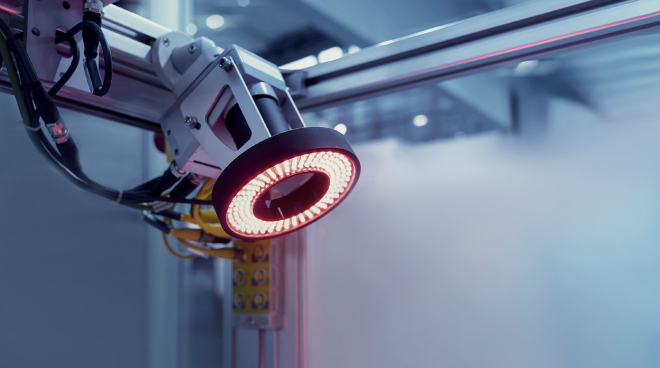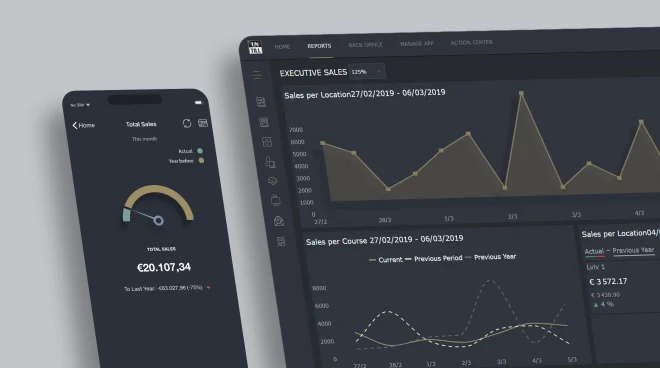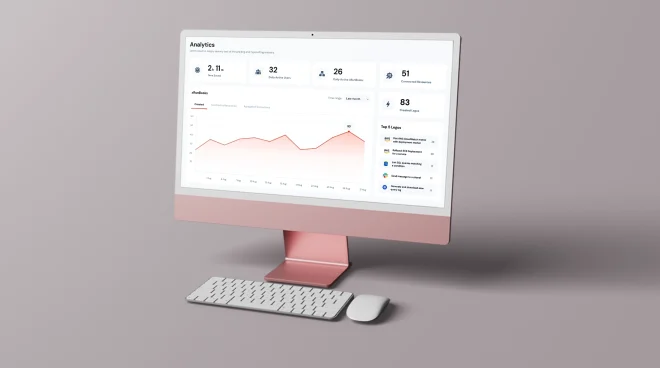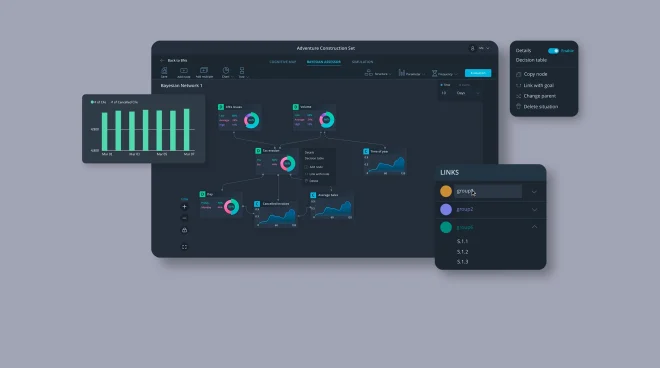With AI and ML development services, businesses can automate repetitive tasks, reducing human intervention and minimizing the possibility of errors. This results in faster operations, improved productivity, and resource optimization, freeing up employees to focus on more strategic tasks.
AI & ML development services
Unlocking the potential of your data with custom AI and machine learning models that predict, automate, and innovate.
What we offer
Machine learning and AI software revolutionize how companies operate and interact with customers. We use our technical expertise to boost your business with potent AI and ML solutions backed by data-driven tools. By automating predictive analytics, we leverage these technologies to help organizations make better decisions, drive operational efficiencies, and improve customer experiences.
As powerful as machine learning and AI can be, they’re only as good as the data they’re based on. Blackthorn Vision helps establish a robust data strategy and introduce suitable data infrastructure before kickstarting AI software development project . We apply our data analytics and machine learning know-how in healthcare, fintech, hospitality, biotechnology, industrial automation, and other domains.
We provide consulting and machine learning development services for your existing data or AI infrastructure. By optimizing the ML lifecycle, we develop automated or semi-automated ML pipelines in the cloud and on-premises.


Ready to redefine how your business thinks?
We create adaptable AI and Machine learning solutions that learn and grow, empowering your business to do the same.
Our ML and AI development services
-
Generative AI
Generative AI helps to automate content creation, enhance creativity, and improve operational efficiency. By leveraging advanced algorithms, we offer the development of solutions that enable businesses with text generation, as well as images and other forms of content, enhancing productivity and streamlining workflows.
-
MLOps
MLOps services ensure seamless deployment and monitoring of ML models in production environments. We assist in enabling continuous integration, delivery, and monitoring, reducing time-to-market and optimizing operational efficiency. MLOps brings agility to your AI processes and improves collaboration between data scientists and IT teams.
-
Computer Vision
Outstanding possibilities of Computer Vision assist in transforming visual data into actionable insights. From object detection and facial recognition to image classification and augmented reality, we offer the development of AI-powered solutions that revolutionize various industries, including healthcare, retail, and manufacturing.
-
User behaviour analytics
AI solutions can provide deep insights into user behaviour patterns, allowing businesses to predict customer needs and preferences and, therefore, make their solutions as user-centered as possible. By analyzing vast amounts of data, we allow businesses to make data-driven decisions and increase engagement.
-
Predictive analytics & forecasting
We help businesses harness the power of predictive analytics to anticipate trends, optimize operations, and enhance decision-making. By using AI models that leverage historical data to provide accurate forecasts, we are driving strategic planning and market competitiveness of businesses of various fields and sizes.
-
Anomaly detection
Consider advanced anomaly detection systems to grant your business the highest protection. We use machine learning to detect unusual patterns in data, ensuring early detection and resolution of potential risks or fraud. For industries like finance, cybersecurity, and healthcare, these solutions are already essential.
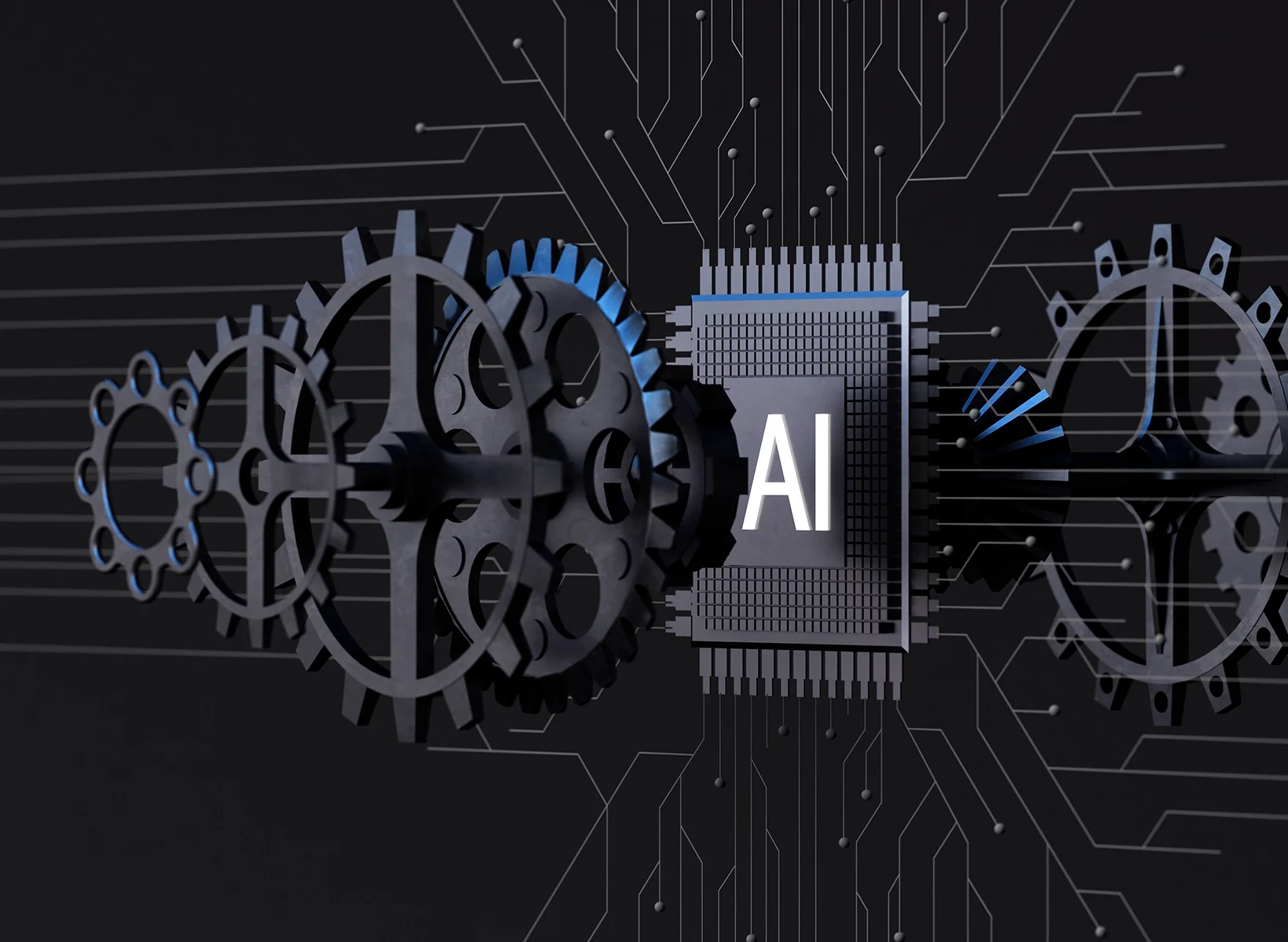
Benefits of AI and Machine learning development services
-
Streamlining tasks through automation
-
Business performance optimization
AI and ML solutions enable businesses to streamline processes and optimize overall performance. By automating key tasks and providing real-time insights, these technologies increase operational efficiency, reduce costs, and drive better outcomes across various industries.
-
Unlocking market opportunities
Harnessing AI and ML opens new market opportunities by leveraging data insights to drive product innovation, customer engagement, and market competitiveness. AI/ML-powered solutions empower businesses to stay ahead of the curve and quickly respond to constantly changing market demands.
-
Empowering informed decision-making
With our AI and ML development services, we can analyze large datasets in real-time, providing the business’ decision-makers with actionable insights. This enables businesses to make more informed and timely decisions, mitigate risks, and capitalize on opportunities more effectively.
-
Enhancing security and governance
AI and ML technologies can greatly enhance security capabilities. They identify threats in real-time and ensure precise compliance with governance standards. We offer the development of customized solutions that will protect against cyberattacks, safeguard sensitive data, and ensure regulatory compliance.
-
Proactive monitoring solutions
Advanced monitoring systems powered with AI ensure businesses receive real-time insights into their operations, enabling proactive issue resolution and decision-making. From monitoring systems and processes to employee performance, AI provides an exceptional level of oversight.


Artificial Intelligence solutions for your business
Discover what AI solutions you can implement in your company, and how our expertise can help you stay ahead of the competition.
AI and ML software development process
ML and AI tech stack



Transform your business operations with Artificial Intelligence
Start building a future-proof AI strategy and solve complex business tasks with self-learning systems.
Daryna Chorna
Customer success manager

ML & Artificial Intelligence development services can help you avoid
Certifications & awards
What our clients say
4.8
What makes us a great choice for Machine learning and AI development?
-
01
Commitment to client success
We are deeply committed to delivering success and top-notch AI and ML development services for our clients. From the initial concept to post-deployment support, our team is focused on delivering a solution that meets and exceeds expectations. We ensure every aspect of the solution and every separate AI development service contributes to long-term success.
01 /04 -
02
Proven
expertiseOur proven track record of delivering AI and ML projects demonstrates our expertise and readiness to carry on. Whether you have an idea of building predictive models for healthcare or creating custom anomaly detection systems for finance, with our experience across industries, we are here as your tech partner and ready to deliver innovative and technically advanced solutions.
02 /04 -
03
Unique
talentsOur team is composed of experts with unique skill sets across Artificial Intelligence services, machine learning, data science, and software development. This multidisciplinary approach allows us to deliver comprehensive, end-to-end AI solutions that are both technically sound and creatively innovative. We continuously invest in our team’s growth to stay at the cutting edge of AI advancements.
03 /04 -
04
Strong corporate
cultureAt Blackthorn Vision, we foster an environment of innovation, collaboration, and excellence. Our corporate culture emphasizes continuous learning, teamwork, and client-first thinking, which drives us to create solutions of the highest quality. This approach ensures that our clients receive tailored Machine Learning development services with a focus on sustainability, mutual understanding, and long-term success.
04 /04
Machine learning and AI development services: FAQ
-
What types of ML & AI services do you offer?
We offer a diverse range of AI and ML development services tailored to meet various business needs. These include generative AI to automate creative processes, MLOps for streamlined model deployment and lifecycle management, and computer vision solutions for image and video recognition. Additionally, we provide predictive analytics and forecasting to support strategic decision-making, anomaly detection to identify data irregularities, and user behaviour analytics to gain deeper insights into customer actions.
-
How can ML & AI benefit my business?
AI and ML can significantly enhance various areas of your business. These technologies help automate repetitive tasks, improve decision-making through data-driven insights, and boost operational efficiency. Moreover, Artificial Intelligence development services can help to personalize customer experiences, whether it’s optimizing back-office processes or enhancing customer engagement. By integrating AI, businesses can see measurable returns on investment through more streamlined workflows and new opportunities.
-
What industries can benefit from ML & AI solutions?
With our AI development services, we provide value across multiple industries. In healthcare, they aid in diagnosis, treatment recommendations, and operational efficiency. In finance, they improve fraud detection, risk management, and predictive analytics. For retail, AI solutions offer insights into customer behavior, optimize recommendations, and streamline supply chain processes. Manufacturing benefits through predictive maintenance and quality control, while in marketing, AI is used for customer segmentation and personalized campaign strategies.
-
What is the process for developing an ML or AI solution?
The AI and Machine Learning development services involve several key stages. At our AI/ML development company, we start with problem definition to ensure the project aligns with your business objectives. Next, we design a flexible and scalable model architecture. After that, we select the most suitable platform or framework, followed by model development, where we create the necessary algorithms and rules-based systems. Testing and validation take place using real-world data to ensure optimal performance before we move on to deployment and monitoring to refine the solution in a production environment.
-
How long does it take to develop an ML or AI solution?
Development timelines depend on the complexity of the solution and specific requirements. Small-scale projects can be completed within a few months, while more complex AI models may take six months or longer to fully develop, test, and deploy. Once we evaluate your business needs and technical requirements, we provide detailed timelines for the project.
-
What are the costs associated with ML & AI development?
The development cost varies from one artificial intelligence development company to another based on the project’s complexity, data volume, and duration. We offer flexible pricing models designed to meet the needs of businesses of all sizes, ensuring that our solutions deliver long-term value without exceeding your budget.
-
Do you offer chatbot development as part of your ML & AI Development Services?
Yes, we do. Our team specializes in building AI-driven chatbots using advanced Natural Language Processing (NLP) algorithms and machine learning techniques. These chatbots can handle a variety of tasks, from automating customer support interactions to streamlining internal workflows. We customize each solution to align with your business needs, ensuring seamless integration with your existing systems.
Client success stories
Contact us

Daryna Chorna
Customer success manager





